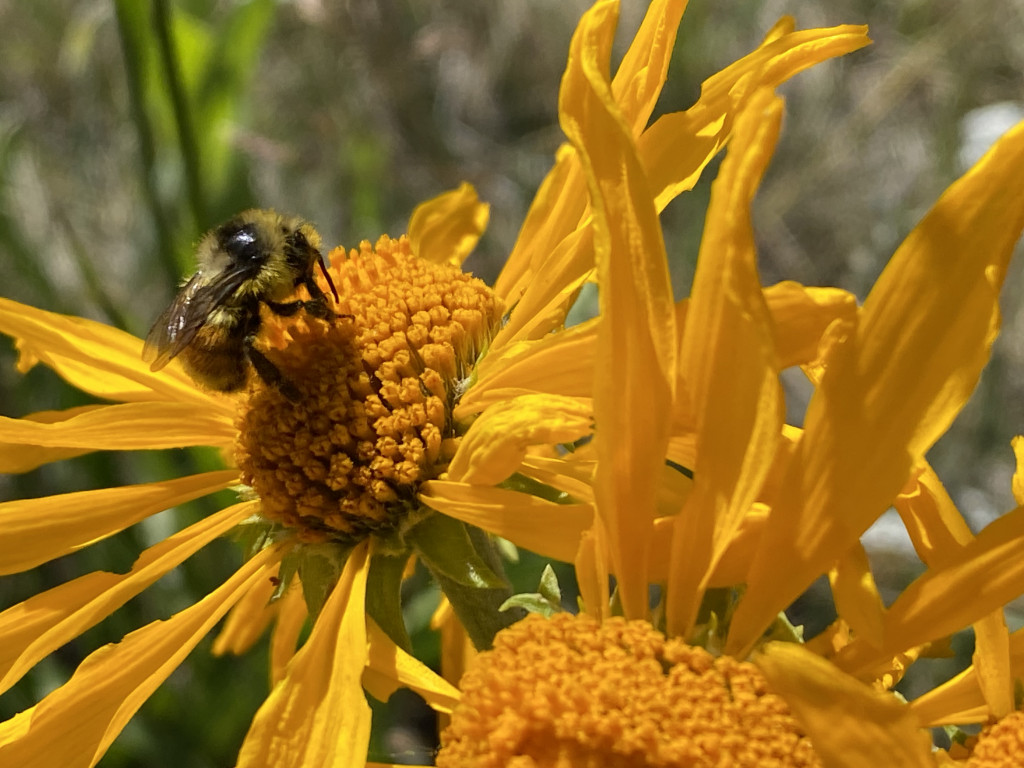Native plant conference taps ASU professor and Valley resident

ALAMOSA— Dr. Mathew Sharples, Assistant Professor of Biology and Curator of the Herbarium at Adams State University in Alamosa, will be one of the featured speakers at the annual conference of the Colorado Native Plant Society scheduled for Sept. 22-24 on the Alamosa Campus.
Sharples, who has worked in the herbarium at the University of Nevada and as a researcher at the University of Colorado before Adams State, is beginning his second year at the university.
"I'm pretty much the plant person at Adams State, I'm the botanist, the evolutionary botanist and I will be teaching evolutionary botany. I'm also teaching a mycology class this fall," he said. Sharples will teach other classes this fall as well.
Having spent three summers hiking the South San Juan Wilderness area doing field research cataloging the plant biodiversity of the mountainous region, Sharples is well acquainted with the region.
"I was inventorying the entire wilderness area on a species level," said Sharples in an interview with the Valley Courier.
That fieldwork included vigorous off-trail hiking and painstaking identification of each species of plants encountered. Sharples identified 744 plant species including 39 plants in Conejos and Archuleta counties that previously had not been identified there, including Harbour's Penstemon (Penstemon harbourii).
At the native plant conference, Sharples will discuss the fieldwork his Adams State University students have completed, and he is proud of their research.
"The plant systematics students came up with a few county records [new data of plant locations] themselves. I thought that was really cool and I want to give a shout-out to them," he said.
Crestone resident and botanist, Carol English, will discuss the flora of the San Luis Valley at the conference in conjunction with Sharples.
English is a frequent hiker of the Sangre de Cristo Mountains, including the Willow Lake Trail. She will be leading a guided botany hike along the trail as part of the conference. On Sunday, Sept. 24, English will lead a hike up trail on the Rio Grande National Forest in search of the rare plant Smith's whitlowgrass (Draba smithii.) This hike will be several miles each way and up to an elevation of about 11,000 feet.
"The hike will be a bit hard and is for people who can move," says English. Several other field trips including one in search of the endemic sunflower on the dunes in the national park that English describes as "really cool."
English started the San Luis Valley chapter of the native plant society several years ago and told the Valley Courier that in addition to the two-day conference, there will be a day-long rare plant symposium that will highlight rare plants of south-central/south-east Colorado. Included in the symposium will be updates from partners, presentations, and discussions on rare plant conversation status and research.
The symposium is hosted by the Colorado State University Colorado Natural Heritage Program. The program's mission is to track and rank Colorado's rare and imperiled species of plants and animals and to promote the conservation of biological resources.
"The theme of the conference this year is ethnobotany, human plant uses, and indigenous uses of plants. There will be several talks on native plants of the San Luis Valley, and a talk on a possible newly identified sunflower in Great Sand Dunes National Park and Preserve," said English.
For more information, visit the Colorado Native Plant Society at www.conps.org.



